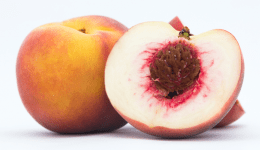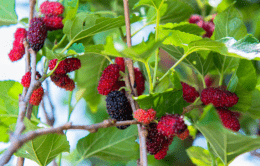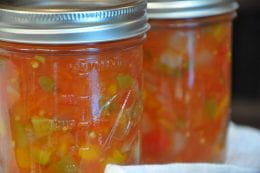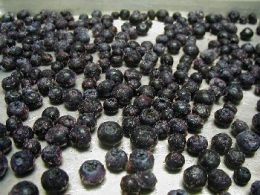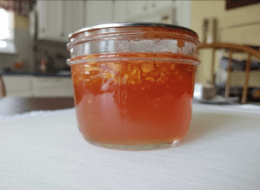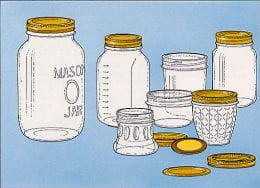
A variety of jar sizes are available to use in canning. Reliable recipes sources will indicate what size of jars are to be used for that recipe. But can you use a jar not listed for that recipe? Yes and no.
Standard jar sizes include half pint (8-oz.), pint (16-oz.), and quart (32-oz.). There are also in-between sizes such as 4-oz., 12-oz., 24-oz., and 28 oz.
When a recipe lists half-pint only, you cannot use a larger jar. This is because the larger jar may require a longer processing time which must be tested and verified to ensure safety. Guessing, by the home food preserver, can lead to spoiled food. If a recipe indicates half-pint AND pint, you can use a 12-oz. jar, but you cannot use any jar larger than a pint. For jams and jellies, 4-oz. jars are a good option. Use 4 oz. jars like half-pints; 12-oz. jars like pints; and 24-oz. and 28-oz. jars like quarts.
Just because your family uses a certain food in larger quantities, does not mean you can preserve in larger jars. Be smart, be safe!
A Jar Guide to what foods are best preserved in the various sizes of jars is at www.ballmasonjars.com/take-guesswork-out-jar-selection.html.
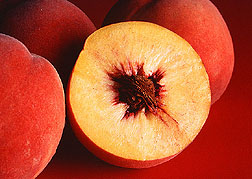 Yellow peaches are a favorite to preserve in many ways. Besides just canning peaches, they can be frozen and dehydrated. But there are many other tasty peach treats! Try these:
Yellow peaches are a favorite to preserve in many ways. Besides just canning peaches, they can be frozen and dehydrated. But there are many other tasty peach treats! Try these: